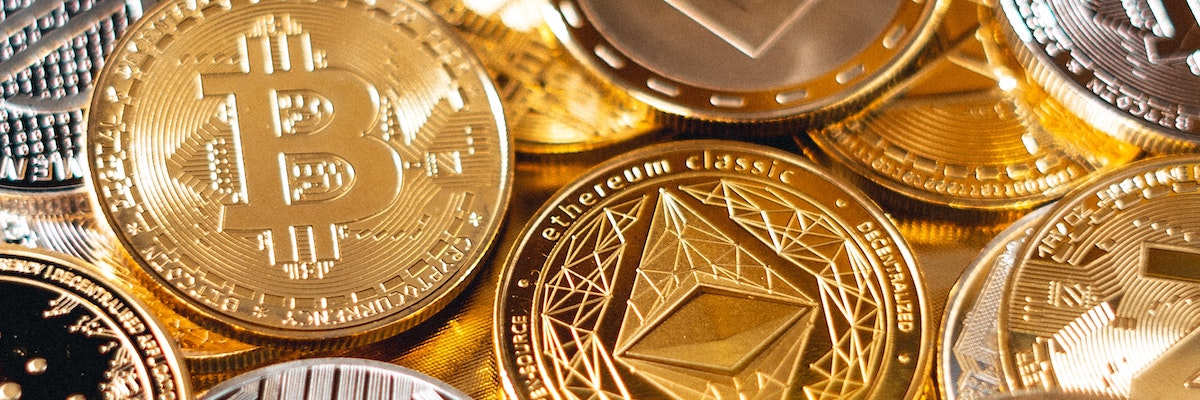Cryptocurrency has been a buzzword for a while, but the concept has not become any simpler for the newbies. The confusion and myth that surrounds cryptocurrencies have contributed equally in hindering its popularity. As a result, even today many see cryptocurrency with suspicion. Many others want to enter this world but are dissuaded by the apparent complexity around it. However, it can be solved only with correct and simple knowledge.
Hence, here is the ultimate beginner’s guide for understanding and investing in cryptocurrency:
What Are Cryptocurrencies?
The most obvious way to start this guide is also the most difficult one: defining cryptocurrency. Depending on the level of detail you want to go, there are many ways to explain the concept of cryptocurrency. In the simplest form, cryptocurrency can be understood as a digital currency you can use in exchange for goods, services or other such digital currencies. In that aspect, it is similar to real-life currency: it does not have an intrinsic value, but a token one.
Now that you have grasped its basic purpose, let’s delve deeper. Cryptocurrency is an online medium of exchange that facilitates financial transactions. It is decentralized and is not regulated by a government or organization. It works on a peer-to-peer network: when a transaction occurs between two parties, it is broadcasted to a network. Each member of the network has to verify and then sign for that transaction. Once all members have signed, then only the transaction is confirmed. This decentralization eliminates the need for an intermediate authority like banks to authorize and confirm transactions.
There are certain features that make cryptocurrencies quite unique:
- Cryptocurrency transactions are irreversible. Once confirmed, no authority (including you) can undo it.
- Unlike real-world financial transactions, cryptocurrency transactions don’t need to be connected with any real-world entity. In fact, the whole transaction simply needs an encrypted public address.
- Crypto transactions are extremely secure. While the entity at an end might be fraudulent, there is no way to compromise a transaction itself. The private key of the owner (read below) is the only thing that authorizes a transaction.
- Cryptocurrency is decentralized, so there is no overseeing authority to restrict you. Being peer-to-peer, only the users are responsible for the transactions.
Even apart from these features, cryptocurrency has many interesting things about it. Most cryptocurrencies are limited in supply, and this is written directly in their source code. So, unlike paper money, one can’t create as many coins as they like. Unlike fiat currency, which represents a debt to the authorizing entity, cryptocurrency has no concept of debt associated with it.
What is Blockchain and How Does It Work?

Blockchain can be defined as a public ledger that was established around a P2P system. It can be shared without fear among different users for generating an unalterable transaction record. It will be stamped and linked with the preceding transaction every time. A specific set of transactions will be added each time. And, thus the data becomes yet another block in the chain. Only after obtaining a consensus between contributors in the system, blockchain will be updated. The moment a new data is filled, it can never be removed. It can also be specified as a write-once and append many techniques. The technology has also emerged as a confirmable and auditable record of all the transactions. Blockchain technology is still in the initial stage and showcases immense potential.
The moment a block stores new data, it gets added to the blockchain. It includes several blocks that are threaded together. A blockchain has emerged as a simple chain of blocks that include information. Every block contains a cryptographic hash of the earlier block, transaction data, and a timestamp. However, the design is quite easy, but then it is this design only that can make blockchain untouchable to any data breach.
In blockchain technology, an open distributed ledger will record the transaction of two parties effectively. When it gets distributed, it is controlled by a peer to peer network functioning all together to solve complicated mathematical problems. It is done for validating new blocks. And, the moment it is recorded, the data in any particular block can’t be updated without changing all succeeding blocks. It will need the validation of a majority of the network. And, probably this is the reason why it is considered to be highly secure and safe. All the blockchains use a hash. Hashes can be defined as a long series of arbitrary strings that help in tracking your transaction. With the help of the transaction hash or wallet address, anyone will be able to check his/her transaction details.
Which Cryptocurrencies Are the Most Popular?
Today, more than 2000 different cryptocurrencies are available in the market. Together, they were worth more than $250 billion in June 2019. But only some have managed to create a standard for themselves.
Below described are the four most popular cryptocurrencies:
1. Bitcoin (BTC):
Bitcoin is the first and the most valuable cryptocurrency available in the market to date. Created by Satoshi Nakamoto (anonymous) a decade ago, it today serves as the de-facto standard of payment in most exchanges. Bitcoin alone is worth more than half of the total cryptocurrency market. It is often called the “gold” among cryptocurrencies, a standard against which all other cryptocurrencies have to compete. The blockchain technology, on which Bitcoin is built, is the most imitated technology among its many ‘inspired’ cryptocurrencies. Almost all coin exchanges accept BTC for buying and selling other cryptocurrencies.
2. Ethereum (ETH):
Ethereum network not only handles payment transactions but also contracts and programs of high complexity. Its real-world use case aims at replacing data giants like Google and Apple with a decentralized network of user data. Unlike Bitcoin, the Ethereum network consists of a family of cryptocurrencies that emerges from various hard forks. These include Ether (ETH) and Ethereum Classic.
3. Ripple (XRP):
Ripple is a global network that aimed to improve cross-border payment transfers. Its cryptocurrency is XRP which operates on a unique blockchain and can validate transactions 200x faster than Bitcoin. XRP is quite different from other cryptocurrencies as it can’t be mined and can’t be used for monetary transactions. All token are pre-mined and can only be purchased via exchanges. The tokens exist only to avoid spam in a network.
4. Litecoin (LTC):
Litecoin was founded in 2011 to serve as a lighter version of Bitcoin. It is built on the same blockchain like Bitcoin, but with minor differences so that the end result is a scaled-down version. It is faster to mine, holds a smaller value, and its algorithm is more flexible. Litecoin also has a greater market cap and total possible coins – compared to 21 million BTC, there can be 84 million LTC. Today, Litecoin is still utilized to serve as a backup if Bitcoin ever fails.
How Do I Buy Cryptocurrencies?

You can buy cryptocurrencies from something called cryptocurrency exchange (commonly known as ‘exchange’). These exchanges allow you to buy or sell cryptocurrencies using two methods: fiat or other cryptocurrencies:
Fiat is what real-world currency is known as in this context. Some exchanges allow you to buy or sell cryptocurrencies using other cryptocurrencies, although only the most popular and reputed cryptocurrencies like Bitcoin are allowed (read about popular cryptocurrencies below).
Exchanges are privately-owned, so you need to choose the right exchange before you buy cryptocurrency from them. Factors like fees, withdrawal limits, and liquidity are important while making this decision.
Another important thing you need to buy cryptocurrency is a wallet (explained in detail below). Usually, you need to create an account on an exchange and link your wallet with it. Most reputed exchanges require your documents for identification. The verification of documents takes some time, only after which you will be allowed to start trading. You must remember that buying a cryptocurrency is simply a token of acquiring a share in the cryptocurrency network itself.
While exchanges are the most common ways of buying cryptocurrencies, there are some other ways to get them too. Mining is a proof-of-work system where users solve complex mathematical problems for validating each transaction. In return of their time and effort, they are rewarded with cryptocurrency. This method is often preferred by those who have the computation resources and time but not the money to buy cryptocurrencies.
Another method is investing in new cryptocurrencies during the ICO phase, where investors get some coins in return. Many users are also turning towards one-to-one marketplaces where users exchange cryptocurrency with each other without any overseeing authority. While risky, this method is gaining popularity due to the lack of restrictions.
The primary concern many users have about cryptocurrencies is their legality. While it varies from country-to-country, cryptocurrencies are certainly legal within the US. Hence, you can freely trade in cryptocurrencies without worrying about legal repercussions. However, cryptocurrency transactions are permanent and there is no authority you can appeal for fraud. Hence, precaution must be exercised to avoid any scammers.
How Do I Buy Bitcoin?
There are some steps given below that you need to follow when you set out to buy Bitcoins:
1. Find a good Bitcoin wallet:
Digital wallets help in storing your Bitcoin as long as you are not ready to spend them. It is crucial to select a suitable wallet that will work for you. You should ideally use that wallet which is automatically offered to you on your suggested exchange. You may also set up a wallet that is not linked to any exchange.
2. Select the correct Bitcoin trader:
The ideal place to purchase your first Bitcoin will be an exchange. There are various exchanges available for you with different performances. Some may be less reliable while others can be quite limited. Therefore, you need to select the ideal exchange after thorough research.
3. Choose payment method:
The leading exchanges accept a vast variety of payment methods on the basis of what they are keen to use. It may be a contentious point for several exchanges. It is because some payment methods have been used to cheat sellers for quick money in the past. You may opt for Coinbase that allows both bank account and credit/debit card transfers for payments. One payment solution should be linked with your respective account before you may make the trade. It is interesting here to note that Coinbase does not support PayPal.
4. You need to buy some Bitcoins and store them:
The leading exchanges offer you the vital information on how many Bitcoin you may purchase for a specific amount of money. Bitcoin prices have a volatile nature and they may vary significantly at various moments. Therefore, you need to remain vigilant while you make a purchase of Bitcoins. Soon after you have bought your Bitcoin, they will be stored in your Coinbase wallet. You may then opt to transfer these funds to the address of your Bitcoin wallet that you just created. You may need to pay a small fee for doing it.
How to Store Cryptocurrencies?
Once you buy any cryptocurrency, the next step is storing it. By default, all cryptocurrencies are stored on the blockchain. However, investors can keep track of their cryptocurrencies through something called wallets. Basically, a wallet consists of two pieces of information – key and address.
- The address is encrypted, unique, and the only public information in the entire wallet. You only need the wallet address of the recipient to send them cryptocurrency.
- The key is only known to the owner of the wallet and is thus used to verify and authorize any transaction on the wallet. In simple words, the key of a crypto-wallet is like the pin of an ATM card. Losing the key can completely and irreversibly compromise to your wallet.
Most wallets are online, as it is the simplest and most accessible way of managing cryptocurrencies. However, due to some recent attacks on coin exchanges, offline wallets have also gained prominence. Paper wallets or hardware wallets are generally more expensive and cumbersome, but they remove the risk of cyber-attacks. It is also possible to transfer your coins from crypto-exchanges to your hardware wallets by following simple steps.
Something to consider before storing cryptocurrencies is the ease of transferring them. If you are looking to invest in cryptocurrencies, you might be hoping to get hold of multiple coins, especially through Initial Coin Offerings (ICOs). As such, you should look for wallets that easily allow to store and use multiple cryptocurrencies.
Also, most wallets charge a certain fee for the transaction of coins. This includes both coin-to-coin transactions and coin-to-PM (physical money) transactions. You should be looking for the most efficient wallet with the minimum transaction fee. Another feature one must look for in wallets is the security. Given the sensitive nature of crypto-wallets, an added layer of security is always desirable.
Are Cryptocurrencies a Good Investment?
Let’s address the elephant in the room: how good of an investment cryptocurrency really is? The answer depends largely on your aptitude for risks. The absence of any regulating authority (like the government) makes space for a world of extremes. The value of a cryptocurrency could skyrocket or fall flat depending on many factors. Even in the best-case scenario, cryptocurrency should not be more than a third of your total investments, the remaining being in traditional methods.
There are two ways cryptocurrencies boost their value in the market.
- The first is simply supply-demand. Since cryptocurrencies come with limited supply, a very promising one might create a huge demand in the market. This, in turn, would increase the value of the coins. However, this method, despite being more common, is not very sustainable, and would ultimately falter.
- The other way is real-world applicability. In the end, only the cryptocurrencies that have an application in the real-world can survive and continue to be valuable. Understanding the yellow and white papers (explained below) is the key to identify such cryptocurrencies.
Investing in new cryptocurrencies is a hot investment opportunity. But it also comes with considerable risks, though one can protect themselves if they pay attention to certain details. The ownership of the company is often the first sign of trust. Even though the creator of Bitcoin is anonymous to date, it is still considered safer if the owner of the cryptocurrency is a known and reliable name. If other well-known and reputable investors are also investing in that cryptocurrency, chances are that it might have the potential to give good returns.
The ICOs are the hottest investments since they offer the greatest returns, but they also carry significant risks. Thus, if you are investing in a cryptocurrency during the ICO phase, it would serve you well to read more about the coin, especially its white paper. The white paper of the cryptocurrency explains the technology behind the coin, its purpose, and also what might make it different from the other coins in operation. Many companies offer ICOs on their cryptocurrency without any white paper, which is always a bad sign.
Friends

Crypto Del Sol
At Crypto Del Sol you will find real-time prices, charts, historical data and much more for all major cryptocurrencies.

Become a friend?
If you want to promote your website here at Cryptogetround.com you can always contact us for more information.
Final Thoughts:
This guide wouldn’t make you an expert in cryptocurrency, and it wasn’t the goal either. This guide was written to serve as an easy introduction for those who are interested in cryptocurrency but don’t know where to start. For the upcoming investors, it will serve as a formal introduction in the world of cryptocurrency. The guide was also written with a goal to generate interest in cryptocurrency among those who were earlier not quite into it. We hope we succeeded.
